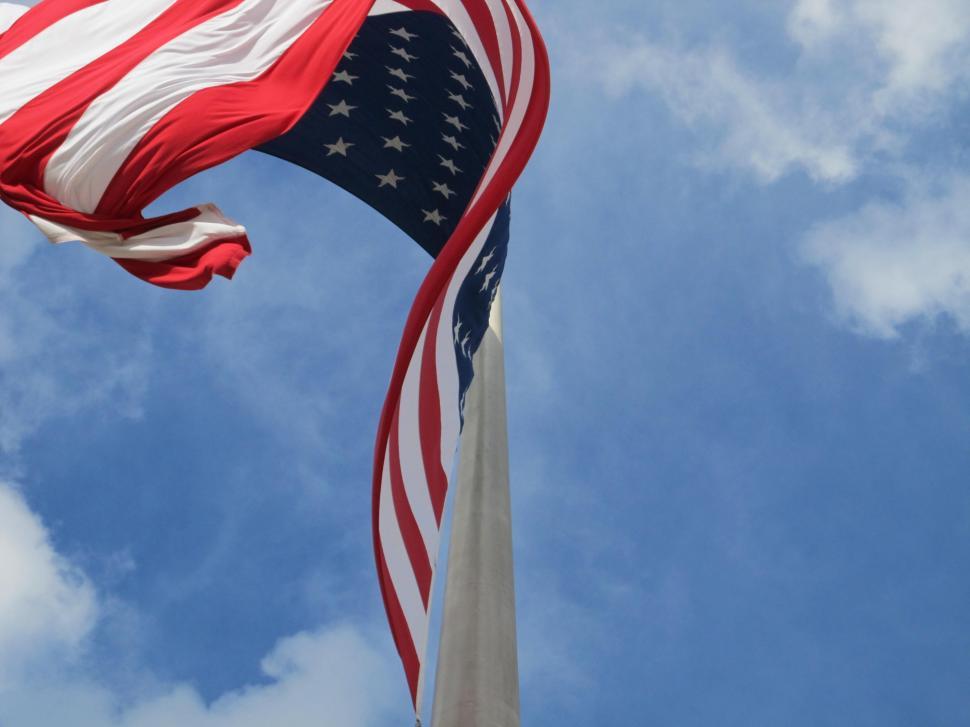Every year, thousands of international entrepreneurs fail in the American market—not because their products are inferior, but because they misunderstand the cultural nuances that drive American consumer behavior. The difference between success and failure often comes down to understanding what Americans really value when they buy.
The American market represents the world's largest consumer economy, with over $17 trillion in annual consumer spending. Yet for international entrepreneurs, cultural barriers can be more challenging than regulatory ones. This guide reveals the cultural keys that successful international businesses use to thrive in America.
The American "Value Proposition" Mindset
American consumers operate with a fundamentally different purchasing psychology than most international markets. Understanding this mindset is crucial for success.
Time is Money: The Convenience Premium
Americans consistently prioritize time-saving and convenience over price. This cultural trait stems from the fast-paced American lifestyle where efficiency equals success.
Success Story: A Canadian meal kit company struggled in the US until they repositioned from "affordable family meals" to "dinner ready in 15 minutes." Sales increased 300% within six months by emphasizing time-saving over cost savings.
Key strategies for leveraging the convenience mindset:
- Lead with time-saving benefits in all marketing materials
- Offer express shipping, even at premium prices
- Simplify your ordering and onboarding processes
- Provide 24/7 customer support options
The "What's In It For Me?" Culture
American consumers are trained to ask this question immediately. Your messaging must answer it within seconds, not minutes.
Pro Tip
Replace feature-focused language with benefit-focused language. Instead of "Our software has advanced analytics," say "See which marketing campaigns generate the most revenue."
Communication Style That Converts
American business communication is notably direct compared to many international cultures. What might seem aggressive in other markets is often seen as confident and trustworthy in America.
Direct, Benefit-Focused Language
Americans appreciate straightforward communication that gets to the point quickly. Avoid overly polite or indirect approaches that work in other cultures.
Instead of: "Our solution might help improve your efficiency"
Say: "Save 3 hours daily with automated reporting"
Instead of: "We believe our product offers good value"
Say: "Cut your costs by 40% while doubling productivity"
The Power of Specificity
Vague claims don't work in American marketing. Specific numbers, percentages, and timeframes build credibility.
- "Increase sales" → "Increase sales by 25% in 90 days"
- "Save money" → "Save $2,400 annually on software costs"
- "Improve efficiency" → "Complete tasks 3x faster"
Trust-Building in American Business Culture
Americans are simultaneously trusting and skeptical. They want to believe in your product but need substantial proof before committing.
Social Proof is King
American consumers heavily rely on reviews, testimonials, and social validation before making purchasing decisions.

American consumers spend an average of 79 days researching before making major business purchases, relying heavily on peer reviews and testimonials.
Essential trust-building elements:
- Customer testimonials with real names and companies
- Case studies with specific results and metrics
- Industry awards and certifications
- Media mentions and press coverage
- Client logos from recognizable American companies
Local Presence Matters
Even in the digital age, Americans prefer doing business with companies that have a local presence.
Critical local presence indicators:
- US phone number (preferably toll-free)
- US business address (even if virtual)
- US-based customer service hours
- Pricing in USD without conversion notices
- US shipping and return policies
Regional Differences Within America
America isn't a monolithic market. Regional cultural differences significantly impact business success.
Northeast: Fast-Paced and Results-Oriented
The Northeast (New York, Boston, Philadelphia) values efficiency, directness, and proven results.
Winning strategies:
- Lead with ROI and measurable outcomes
- Offer rapid implementation timelines
- Emphasize competitive advantages
- Use data-driven decision making language
South: Relationship-Focused and Traditional
Southern markets (Texas, Florida, Georgia) prioritize relationships and traditional business values.
Winning strategies:
- Invest time in relationship building
- Emphasize company values and heritage
- Use warm, personal communication styles
- Highlight community involvement
West Coast: Innovation-Driven and Environmentally Conscious
California, Oregon, and Washington embrace innovation and sustainability.
Winning strategies:
- Highlight innovative features and technology
- Emphasize environmental benefits
- Show social responsibility initiatives
- Use forward-thinking language
Midwest: Practical and Value-Conscious
The Midwest (Illinois, Ohio, Michigan) focuses on practical solutions and value.
Winning strategies:
- Emphasize practical benefits and reliability
- Highlight cost-effectiveness
- Use straightforward, no-nonsense messaging
- Show long-term value propositions
Pricing Psychology for US Markets
American pricing psychology differs significantly from international markets, influenced by decades of specific marketing practices.
The Power of Psychological Pricing
Charm pricing (ending in 9) is deeply ingrained in American consumer psychology.
Research Finding: A study by MIT found that products priced at $39 outsold identical products priced at $34 by 60% in American markets, despite the higher price.
Effective pricing strategies:
- Use $99, $199, $299 instead of round numbers
- Offer three pricing tiers (good, better, best)
- Position premium options to make mid-tier seem reasonable
- Include "most popular" badges on preferred options
Subscription vs. One-Time Payment Preferences
Americans increasingly prefer subscription models for business tools, but one-time payments for consumer products.
B2B Markets: Monthly subscriptions with annual discount options
B2C Markets: One-time purchases with optional premium upgrades
Digital Marketing Adaptation Strategies
American digital marketing channels require specific cultural adaptations for international businesses.
Social Media Preferences
Platform usage varies significantly by demographic and region:
- LinkedIn: Essential for B2B, especially in Northeast and West Coast
- Facebook: Dominant in South and Midwest, older demographics
- Instagram: Strong with younger consumers, visual products
- TikTok: Growing B2B presence, especially for innovative products
Content Marketing Approaches
American content consumption patterns favor specific formats:
- Short-form video content (under 60 seconds)
- Listicles and how-to guides
- Case studies with specific metrics
- Interactive tools and calculators
Pro Tip
Americans consume content during commutes and breaks. Optimize for mobile viewing and create content that provides value in 2-3 minutes or less.
Legal and Regulatory Cultural Considerations
Beyond compliance, understanding American legal culture helps build trust and avoid cultural missteps.
Transparency and Disclosure
Americans expect complete transparency about pricing, terms, and policies.
Essential transparency elements:
- Clear, upfront pricing with no hidden fees
- Detailed privacy policies and data usage
- Easy-to-find terms of service
- Straightforward cancellation policies
- Contact information and business registration details
Customer Rights and Expectations
American consumers expect strong customer rights and will abandon businesses that don't meet these expectations.
Key customer rights to emphasize:
- Money-back guarantees (30-90 days typical)
- Free return shipping
- Responsive customer service
- Data privacy protection
- Clear dispute resolution processes
Common Mistakes International Entrepreneurs Make
Learning from others' mistakes can save years of trial and error in the American market.
Cultural Missteps to Avoid
- Over-politeness: Excessive courtesy can seem insincere
- Indirect communication: Americans prefer direct, clear messaging
- Metric system: Always use imperial measurements and Fahrenheit
- Date formats: Use MM/DD/YYYY format, not DD/MM/YYYY
- Currency confusion: Price everything in USD from the start
Marketing Mistakes That Kill Conversions
- Using passive voice instead of active voice
- Focusing on features instead of benefits
- Lacking social proof and testimonials
- Ignoring mobile optimization
- Not localizing customer service hours
Building Your American Market Entry Strategy
Success in the American market requires a systematic approach that addresses cultural adaptation alongside business strategy.
Phase 1: Market Research and Cultural Adaptation (Months 1-2)
- Conduct focus groups with American consumers
- Analyze successful competitors' messaging and positioning
- Adapt your value proposition for American cultural preferences
- Localize all marketing materials and website content
Phase 2: Local Presence Establishment (Months 2-3)
- Set up US business entity and banking
- Establish US phone number and address
- Hire American customer service representatives
- Create US-specific pricing and policies
Phase 3: Targeted Market Testing (Months 3-6)
- Launch in one regional market first
- Test different messaging approaches
- Gather customer feedback and iterate
- Build case studies and testimonials
Phase 4: Scaled Expansion (Months 6+)
- Expand to additional regions based on initial success
- Develop region-specific marketing campaigns
- Build partnerships with American businesses
- Invest in long-term brand building
Success Framework: Shopify, originally Canadian, succeeded in America by establishing a US headquarters, hiring American executives, adapting their messaging to emphasize entrepreneurship and "the American dream," and building partnerships with US-based payment processors and shipping companies.
Measuring Success in the American Market
Track metrics that matter for long-term success, not just short-term sales.
Key Performance Indicators
- Customer Acquisition Cost (CAC): Should decrease as cultural adaptation improves
- Customer Lifetime Value (CLV): Indicates successful cultural alignment
- Net Promoter Score (NPS): Measures cultural acceptance and satisfaction
- Regional Performance Variations: Identifies successful cultural adaptations
- Customer Support Ticket Themes: Reveals cultural misunderstandings
Cultural Adaptation Success Metrics
- Conversion rate improvements over time
- Reduced customer service complaints
- Increased organic word-of-mouth referrals
- Higher customer retention rates
- Positive sentiment in customer feedback
Your Next Steps
Breaking into the American market successfully requires more than just good products—it demands cultural intelligence and strategic adaptation.
Start with these immediate actions:
- Audit your current messaging against American cultural preferences
- Research your target regions within America for cultural fit
- Establish basic local presence with US phone and address
- Test your value proposition with American focus groups
- Adapt your pricing strategy for American psychological preferences
Remember: Cultural adaptation isn't about changing your core product—it's about presenting it in a way that resonates with American values, communication styles, and purchasing behaviors.
The American market rewards businesses that understand and respect its cultural nuances. By implementing these cultural keys, international entrepreneurs can transform their American market entry from a costly experiment into a profitable expansion strategy.
Final Pro Tip
Success in America isn't just about adapting to American culture—it's about authentically connecting with American values while maintaining your unique strengths as an international business. The most successful international companies in America blend cultural adaptation with their distinctive advantages.




